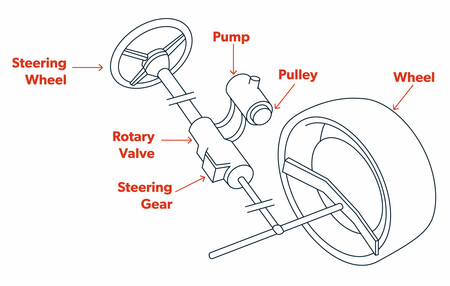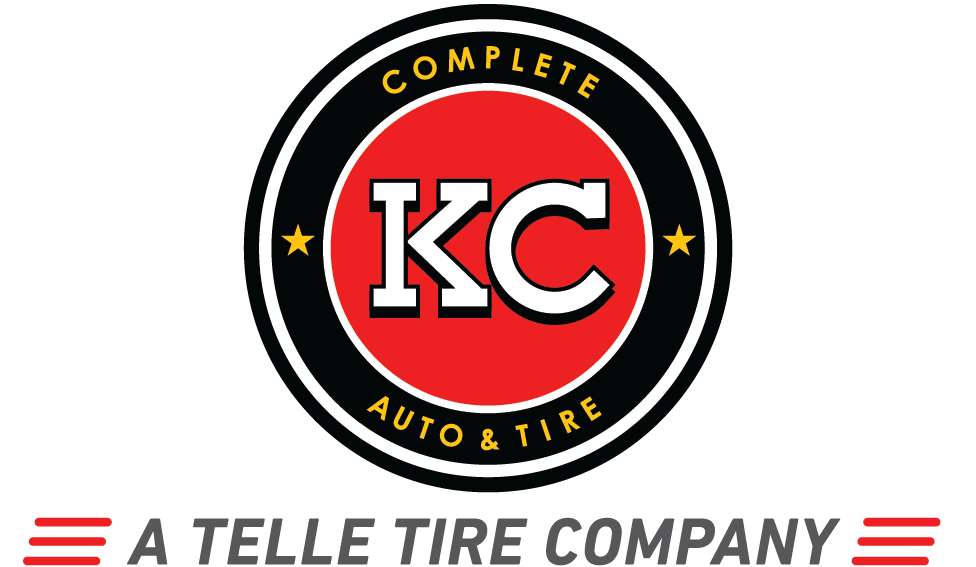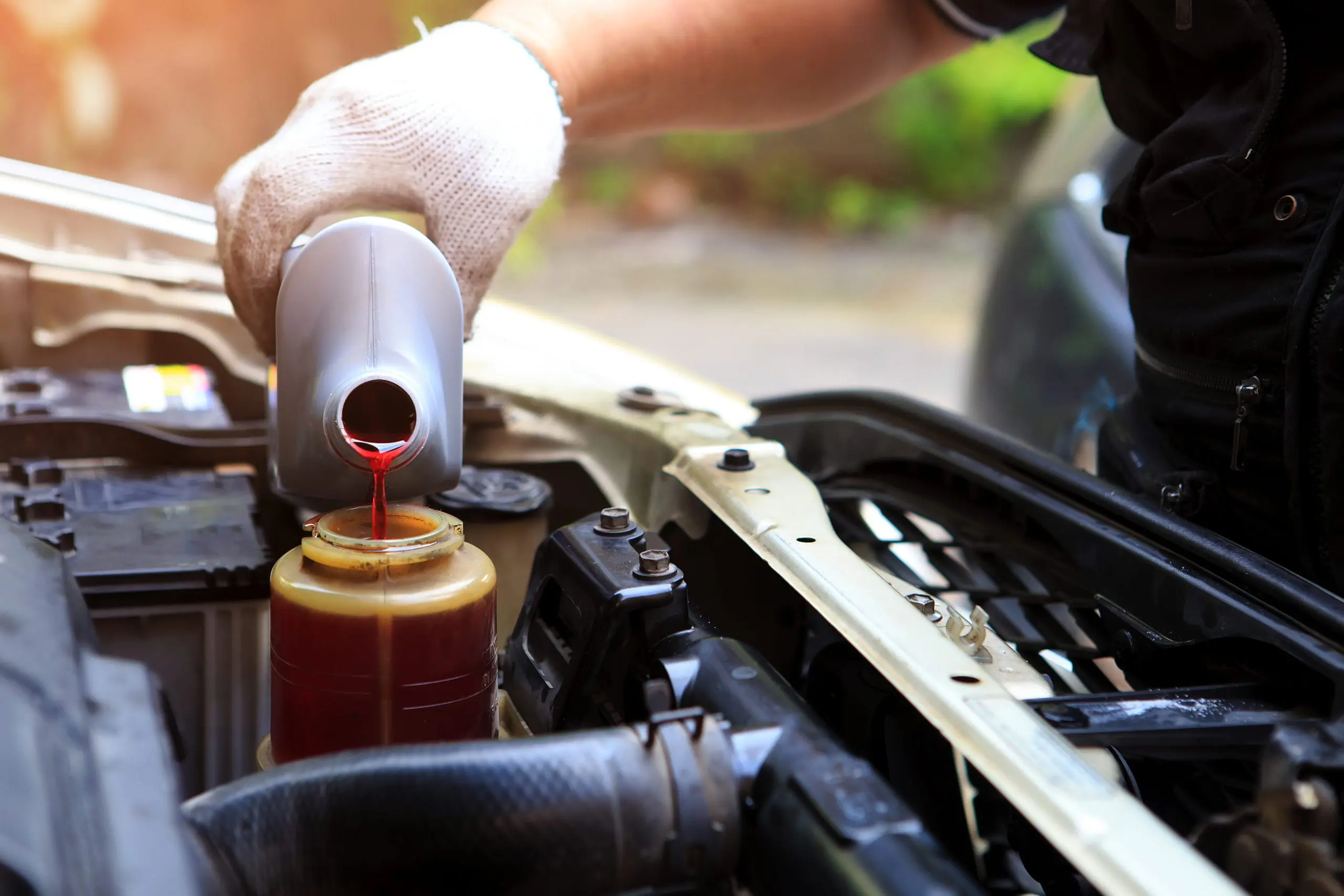What is Power Steering and How Does it Work?
All of us enjoy a smooth ride. The ease of the steering wheel, the rhythmic hum of the motor. If you’ve ever experienced driving without power steering, you know how crucial it is to an enjoyable trip.
The first power steering system was introduced in 1900 by Robert. E Twyford from Pittsburgh, however, it wasn’t until Cadillac released the Chrysler Imperial in 1951 that power steering became an American standard.
What is power steering? And how does it work? Let’s cruise into the details of all things pertaining to a power steering system.
What is Power Steering?
Power steering is a mechanical device installed on a vehicle that reduces the effort needed to turn the steering wheel, making it easier for the vehicle to turn or maneuver at low speeds. There are three main types of power steering systems such as hydraulic power steering (HPS), electric power steering (EPS) and hydroelectric power steering (EPHS).
The most common power steering systems used today are HPS and EPS.
How Power Steering Works
Now that we’ve covered the different types, let’s discuss how the two most common systems work.
Hydraulic Power Steering System
Using hydraulic pressure supplied by an engine-driven pump, or power steering pump, this pressure assists the motion of turning the steering wheel. The power steering pump is turned by a serpentine belt, or accessory drive, providing pressurized power steering fluid to the power steering hose and ultimately delivering it to the power steering control valve at the steering gear.
Power steering fluid is kept in a fluid reservoir that’s maintained by the low side power steering hose that returns fluid at low pressure.
HPS does have its drawbacks. Because the power-steering pump equipped on most vehicles runs constantly and pumps fluid all the time, it wastes horsepower. This wasted power translates into wasted fuel and higher emissions. Hydraulic power steering systems are also prone to leaks and noises and commonly result in failure due to a broken serpentine belt.
Electric Power Steering System
In this system, an electric motor replaces the components that make up an HPS. The motor, which is separate from the vehicle engine, is installed on the steering rack or steering column. An electric power steering system is often the preferred system because of its efficient fuel economy and lower emissions.
Additionally, EPS is customizable by vehicle type, road speed, and even driver preference and it eliminates environmental hazards of leakage and disposal of hydraulic power steering fluid.
Finally, if the engine fails or stalls, electrical assistance continues to function.
Below is a power steering diagram to help visually showcase how this system works:

Electric Power Steering vs. Hydraulic Power Steering
Modern vehicles offer one of two distinct systems: electric power steering or hydraulic power steering. Both work to provide easier, more responsive steering control. However, the way they work is completely different.
Electric power steering relies on an electric motor to assist drivers in turning the steering wheel. This system is highly efficient, only consuming power whenever assistance is needed. It provides improved fuel economy since the electric motor draws power from the vehicle’s electrical system, helping to reduce the engine load. Electric power steering systems are generally lighter and more compact, making the overall vehicle weight lighter. The system also offers greater flexibility and adjustability, easily integrating with other vehicle systems and features, including advanced driver-assistance systems. Electric systems also allow for various steering modes to create a customizable steerig feel and responsiveness based on preferences or driving conditions.
Here’s a table comparing the differences between Electric Power Steering (EPS) and Hydraulic Power Steering (HPS):
| Electric Power Steering (EPS) | Hydraulic Power Steering (HPS) | |
| System Operation | Relies on an electric motor for steering assistance. | Uses hydraulic pressure generated by a pump for assistance. |
| Power Consumption | Highly efficient, consumes power only when assistance is needed. | Less efficient, continuous power consumption for the pump. |
| Fuel Economy | Improved fuel economy as it reduces engine load. | Slightly lower fuel economy due to continuous power usage. |
| Vehicle Weight | Lighter and more compact due to the absence of hydraulic components. | Heavier and bulkier due to hydraulic system components. |
| Integration | Easily integrates with other vehicle systems and features. | Less flexibility in integration with advanced systems. |
| Steering Modes | Offers various steering modes for customizable feel and responsiveness. | Limited steering modes available. |
| Vehicle Application | Commonly used in standard vehicles and smaller cars. | Commonly used in larger vehicles, trucks, and SUVs. |
| Stability and Control | Provides good stability and control for standard driving conditions. | Offers more stability and control for heavy loads. |
| Emergency Maneuverability | Requires engine power to provide steering assistance. | Can maintain steering assistance even with the engine off. |
| Maintenance | Low maintenance with no fluid checks or leaks. | Requires periodic maintenance for fluid checks and leaks. |
| Manufacturing and Repair Costs | Lower manufacturing costs and potentially lower repair costs. | Higher manufacturing costs and potentially higher repair costs. |
| Upkeep and Repair Cost | Generally lower upkeep and repair costs. | Generally higher upkeep and repair costs. |
| Functionality and Performance | Offers improved adjustability and integration with advanced systems. | Less adjustability and integration capabilities. |
Hydraulic power steering uses hydraulic pressure that is generated by a pump to assist steering. These are usually more robust and capable of handling heavier loads than electric systems, which is why it’s more commonly used in larger vehicles, trucks, and SUVs, to offer more stability and control. Hydraulic systems maintain steering assistance even if the engine is off so the vehicle can still be maneuvered in an emergency. While these do offer some advantages, they are less efficient than electric systems because of the continuous power consumption required to operate they hydraulic pump. They, unfortunately, are prone to leaks and require periodic maintenance to check and refill the fluid. Hydraulic components are also more complex, meaning higher manufacturing costs and potentially higher repairs costs required if they fail.
Which power steering system is better will ultimately depend on your vehicle’s size, intended use, fuel efficiency needs, and desired driving experience. However, most standard vehicles will include electric power steering unless you are purchasing a heavy-duty vehicle with high towing or load capacity.
Types of Power Steering Fluids
Depending what type of power steering system your vehicle has will determine the type of power steering fluid it requires. There are three main types of power steering fluids available:
- Automatic Transmission Fluid (ATF)
- Synthetic-Based Hydraulic Fluid
- Universal Powering Steering Fluid
Each of these fluids has different specification standards and is designed to work with specific systems. It’s important to understand that using the incorrect power steering fluid for your vehicle’s power steering system can cause damage to your steering system.
How Often Does Power Steering Need Maintenance?
Your vehicle’s power steering system, although imperative to its performance, is a delicate system that requires a professional’s service to maintain correctly. You should perform a fluid check regularly to ensure it’s properly filled and your filter should be changed annually. When necessary, your steering system fluid will need to be flushed and replaced.
If your power steering system is in need of service, there are some symptoms to look out for. These include:
- Whining noises when turning the wheel
- Difficulty or resistance turning the steering wheel
- Leaking red liquid underneath the car
Have Your Power Steering System Maintained and Serviced Right
If you’re suspicious something is off with your power steering system, schedule an appointment or visit a Telle Tire location near you today.


